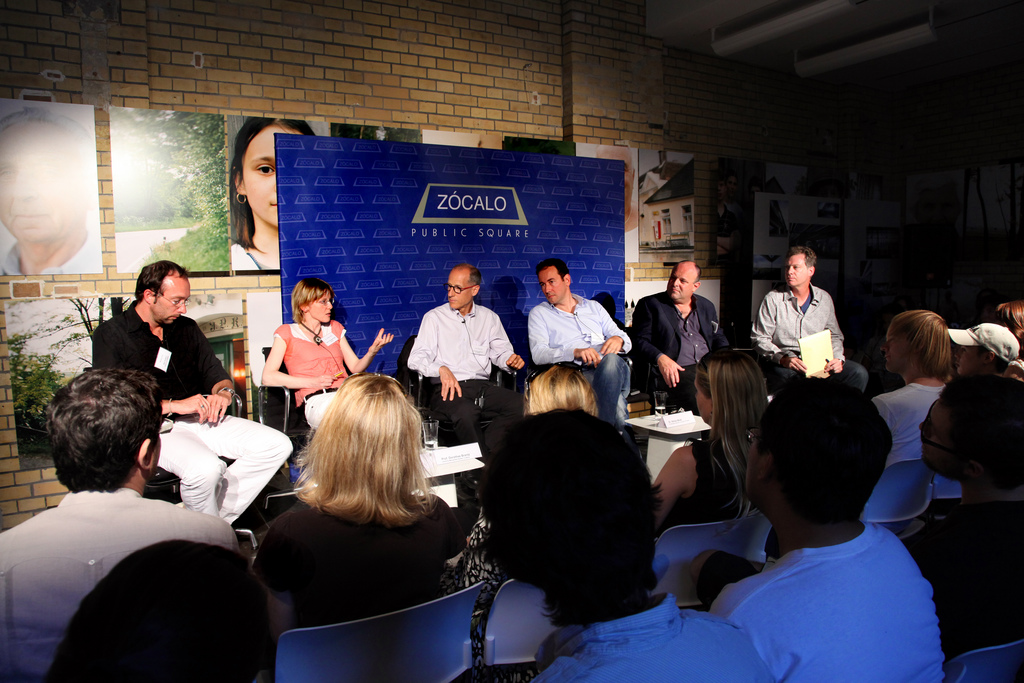
Describing his impressions of Berlin’s rapid, sometimes unplanned and bottom-up redevelopment in the last two decades, architect Roger Sherman made an analogy apt, even uncomfortably so, for Los Angeles.
“It’s something like a fire,” he said to the standing-room-only crowd at the Aedes Gallery in Berlin, at a Zócalo panel co-presented with the Huntington-USC Institute on California and the West. Such development was, he added, more impressive than “any of the individual monuments, however interesting they were.”
Sherman joined moderator Peter Tokofsky; urban historian Greg Hise; GRAFT Architects Founding Partner Wolfram Putz; Dorothee Brantz of the Technische Universität; and Niklas Maak, architecture critic for Frankfurter Allgemeine Zeitung to consider how new cities deal with their pasts, how they refer to or ignore it in architecture and urban planning. As they discussed, however Los Angeles and Berlin differ in terms of history, their relationship with architecture and questions of authenticity, their politics and their populations, both thrive on newness and the challenges of building civic identity in a void.
Berlin before
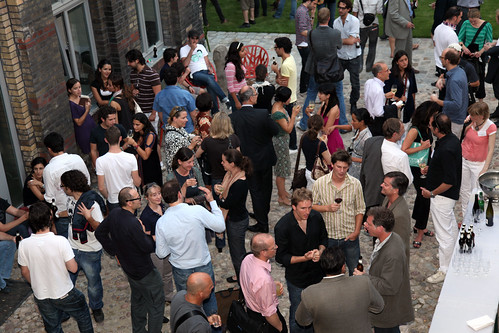 Berlin has been a divided city since long before the Cold War, the panelists noted. It began with two commercial cultures, of fishermen and merchants, Maak said, and in the late 18th century, it tried to be at once Versailles and Paris (and always imported architects to accomplish such ambitions). Putz agreed that the city has always had multiple centers, much like Los Angeles.
Berlin has been a divided city since long before the Cold War, the panelists noted. It began with two commercial cultures, of fishermen and merchants, Maak said, and in the late 18th century, it tried to be at once Versailles and Paris (and always imported architects to accomplish such ambitions). Putz agreed that the city has always had multiple centers, much like Los Angeles.
And Berlin was never, said Brantz, a steady capital city like Washington D.C., or an organically grown one like London; its history as a capital is fragmented and constructed. Its most recent rebuilders, Maak added, seek to transform Berlin into “a mix of 19th century Paris and 17th century premodern Siena, remade with poorer material.” Contradictory movements rule its contemporary architectural and urban planning debate. “One says a void is a chance,” Maak said. “The other says a void is a wound and we have to close it.”
Putz agreed that the debate, unlike the discourse in Los Angeles, is overly binary, focused on right and wrong, role model cities, and an over simplistic urge to indulge nostalgia, to “eradicate traces of the past, and to reconnect to a Germany that was a good Germany.” He added, “We’re still carrying the heritage of a debt that is not interesting. It’s not about curiosity, it’s not about experiment in a city that calls for it.”
Does Los Angeles lack history?
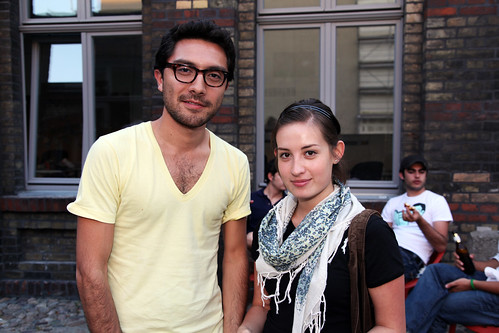 Los Angeles is significantly more carefree of its history, the panelists noted. It has always imagined itself as the city of the future, the city of “progress with a capital p,” Hise said. Since the mid-19th century it has envisioned itself as the capital of the Pacific Rim. “[L.A. Mayor Antonio] Villaraigosa is the last person in one hundred years to make the claim about being the capital of the Pacific Rim,” he said. Like Berlin, Los Angeles is considered a city formed by creative destruction, but Los Angeles also saves more than it might seem. “Every epic of building is on the ground in place,” he said. “You see the moment frozen in time. It is an interesting lab for urbanism.” Sherman agreed, noting in Q&A
Los Angeles is significantly more carefree of its history, the panelists noted. It has always imagined itself as the city of the future, the city of “progress with a capital p,” Hise said. Since the mid-19th century it has envisioned itself as the capital of the Pacific Rim. “[L.A. Mayor Antonio] Villaraigosa is the last person in one hundred years to make the claim about being the capital of the Pacific Rim,” he said. Like Berlin, Los Angeles is considered a city formed by creative destruction, but Los Angeles also saves more than it might seem. “Every epic of building is on the ground in place,” he said. “You see the moment frozen in time. It is an interesting lab for urbanism.” Sherman agreed, noting in Q&A
Sherman agreed, noting that West Hollywood apartments mimic New York – built to draw young actors in the last century – and that Culver City was built in part as a studio back lot. He added in Q&A that overlay zones keep neighborhoods looking as they did at a certain point in the past. “Los Angeles is entirely unapologetic about borrowing when it needs to,” he said. “It’s like hip hop – pick and choose what style you want on the basis of what your marketing team tells you. It’s Disneyland as an urban model.” Unlike Berlin, focused on questions of right and wrong architecture, of authenticity, Los Angeles “can use history with complete impunity” because it always has. Even the city’s appearance is something of a fake, Sherman argued: storefronts may be on the street, but everybody enters through a back door near the parking lot: “It’s like a matrix, where the city that you see is not the city as it actually works.”
Function and dysfunction
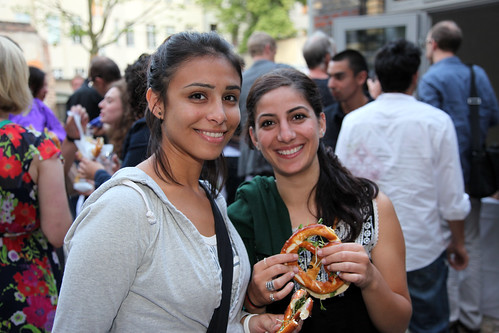 Berlin, the panelists suggested, has a constant conversation with itself about top-down urban planning and architecture with, Tokofsky noted, architectural debates occupying the front pages of newspapers. The city, the panelists suggested, focuses on its monuments, and mimicking its past. Its two major modern controversies are the rebuilding of the Stadtschloss – which some Berliners want rebuilt in various ways, or left as a public park to avoid references to or pastiches of historical styles – Potsdamer Platz and the Reichstag. The latter, Maak noted, is a “high-tech version of an old forum,” but one that glosses over that forum’s true past. And the Potsdamer Platz’s inauthenticity is notably reflected, Maak said, in the scaled-down size of windows on its high rises: “It’s a complete fake. Even the scale is fake,” he said. “They try to rebuild formal structures instead of understanding structural ways of making the city more lively and more vivid.”
Berlin, the panelists suggested, has a constant conversation with itself about top-down urban planning and architecture with, Tokofsky noted, architectural debates occupying the front pages of newspapers. The city, the panelists suggested, focuses on its monuments, and mimicking its past. Its two major modern controversies are the rebuilding of the Stadtschloss – which some Berliners want rebuilt in various ways, or left as a public park to avoid references to or pastiches of historical styles – Potsdamer Platz and the Reichstag. The latter, Maak noted, is a “high-tech version of an old forum,” but one that glosses over that forum’s true past. And the Potsdamer Platz’s inauthenticity is notably reflected, Maak said, in the scaled-down size of windows on its high rises: “It’s a complete fake. Even the scale is fake,” he said. “They try to rebuild formal structures instead of understanding structural ways of making the city more lively and more vivid.”
Los Angeles has its top-down planning disasters too, Sherman said, despite being a city that has minimized or even eliminated the role planners play, whose developers and politicians sometimes seem too close, and whose architects focus heavily on private residences, or major single buildings, rather than public spaces. Sherman noted the city’s repeated attempts, over decades, to remodel its Bunker Hill area and its Pershing Square to create public space that falls short, or is left incomplete, each time.
Use and misuse
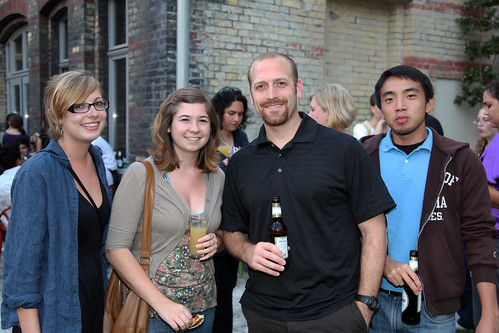 But despite Berlin’s focus on monuments and rules of civic building, much of its most vibrant life comes from, as Maak put it, a “culture of misuse” and a “culture of failure,” something similar to Los Angeles’. Failed urban spaces are transformed to function in unexpected ways: one popular Berlin nightclub, Maak pointed out, occupies the 18th floor of a completely empty building. Planners sometimes ignore or destroy these uses, he noted.
But despite Berlin’s focus on monuments and rules of civic building, much of its most vibrant life comes from, as Maak put it, a “culture of misuse” and a “culture of failure,” something similar to Los Angeles’. Failed urban spaces are transformed to function in unexpected ways: one popular Berlin nightclub, Maak pointed out, occupies the 18th floor of a completely empty building. Planners sometimes ignore or destroy these uses, he noted.
The primary drivers of this “misuse”, Maak, Brantz, and Putz noted, are newcomers, who constantly flock to Berlin and Los Angeles. “The level of accessibility of an alien to come, and be able to belong, and to put energy into the city, is comparable” between the two cities, Putz said, though he noted that the immigrant classes are quite different. Berlin’s is primarily Turkish; Los Angeles’, while primarily Hispanic, has several more prominent ethnic groups. The creative class that flocks to Berlin does not drive the architectural conformity that some politicians and planners seem to support. “They are not interested in finishing the novel that Berlin was meant to be,” he said.
And though it may lack the creative class of Berlin, Hise said, Los Angeles is also mythologized as “a place where people make themselves.” This translates to its architecture, he argued: immigrants transform land use; local communities band together to fight planners on the basis of public safety and pollution.
And both cities, like cities around the world, Brantz noted wryly, have been transformed by “starchitects.” “That’s actually robbing a lot of cities of their distinct identities,” she said, “but at the same time, they’re creating a global ideal, of global cities.”
Watch the video here.
See more photos here.
*Photos by Aaron Salcido.




Send A Letter To the Editors